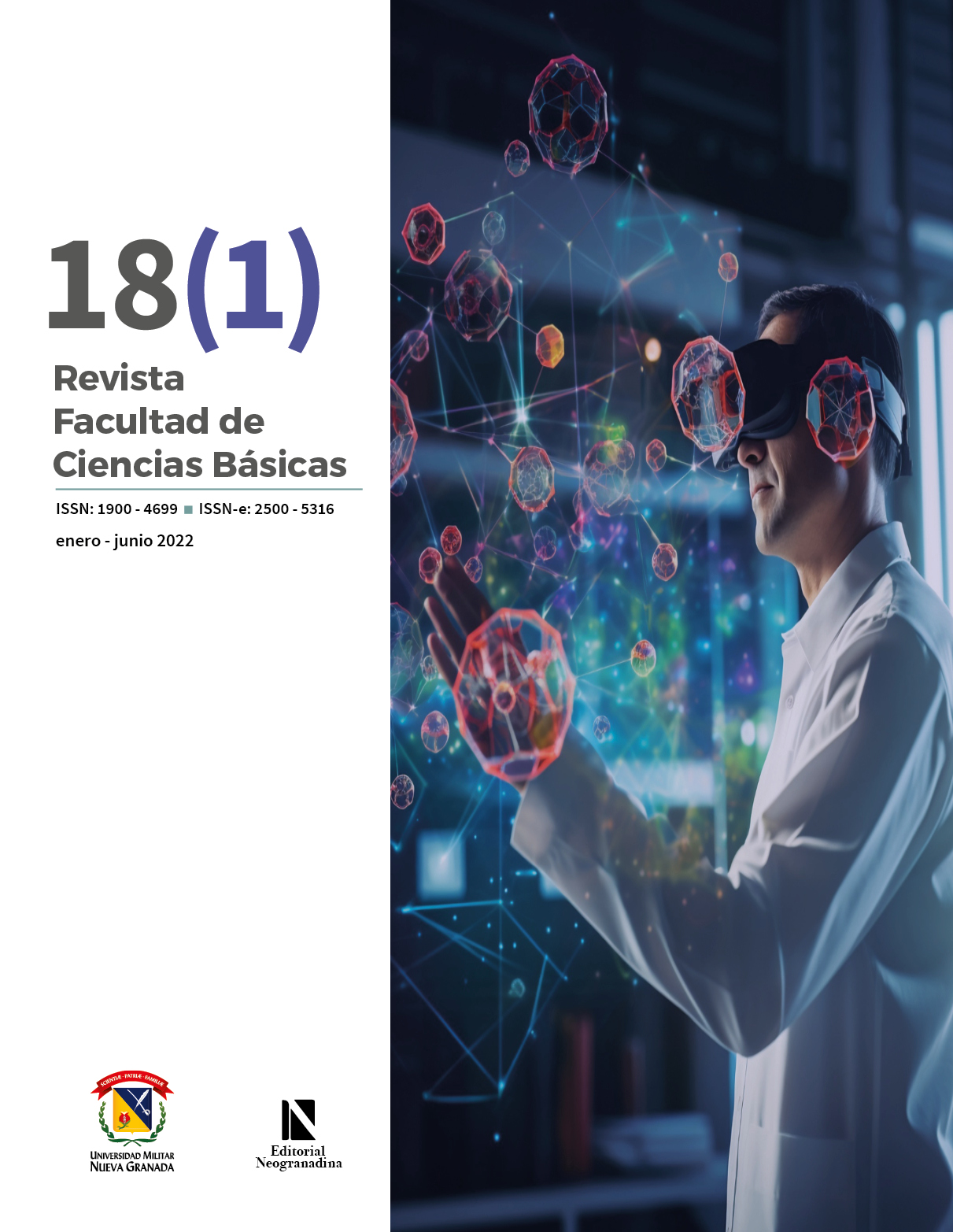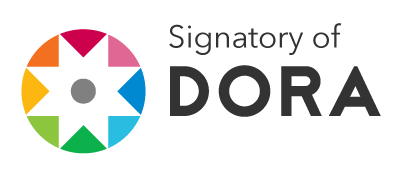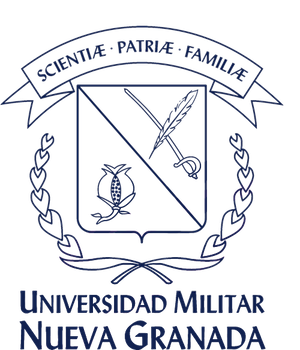Development Conditions of Model Organism, Tribolium Castaneum Herbst (Coleoptera: Tenebrionidae)
Resumen
It has been widely reported that environmental conditions and the type of diet affect the development of insects. Tribolium castaneum is a beetle widely used in research as a model organism in studies of genetics, development, and toxicology. In this paper, we studied the development cycle of the insect under laboratory conditions (26±2 °C and ground or flakes oatmeal as diet). We found that the egg stage lasts for 6-7 days, the larvae can go through up to eight instars in total, and they can begin pupation from the fourth instar onwards. The pupal stage has a duration of 7±1.7 days. The duration of larval development in the insect is 46-81 days, with an average of 65±19 days. Adults have a size of 3.6±0.0 x 1.1±0.0 mm. In conclusion, Tribolium castaneum is an insect of complete metamorphosis (holometabolous) with a development period of the immature stage ranging from 46-81 days and up to eight instars in our laboratory conditions.
Descargas
Referencias bibliográficas
Y. Suzuki, J.W. Truman, L.M. Riddiford, “The role of Broad in the development of Tribolium castaneum: implications for the evolution of the holometabolous insect pupa”, Development, vol. 135, pp. 569-577, 2008.
S.J. Brown, T.D. Shippy, S. Miller, R. Bolognesi, R.W. Beeman, M.D. Lorenzen, G. Bucher, E.A. Wimmer, M. Klingler, “The Red Flour Beetle, Tribolium castaneum (Coleoptera): A Model for Studies of Development and Pest Biology”, Cold Spring Harbor Protocols, 2009: pdb.emo126.
M.B. Devi, N.V. Devi, “Biology of rust-red flour beetle, Tribolium castaneum (Herbst) (Coleoptera: Tenebrionidae)”, Biological Forum – An International Journal, vol .7, pp. 12-15, 2015.
L. Wang, S. Wang, Y. Li, M.S.R. Paradesi, S.J. Brown, “BeetleBase: the model organism database for Tribolium castaneum”, Nucleic Acids Res, vol. 35, pp. D476-D479, 2007.
B. Altincicek, E. Knorr, A. Vilcinskas, “Beetle immunity: Identification of immune-inducible genes from the model insect Tribolium castaneum”, Dev Comp Immunol, vol. 32, pp. 585-595, 2008.
C. Goodman, D. Stanley, J. Ringbauer, R. Beeman, K. Silver, Y. Park, “A cell line derived from the red flour beetle Tribolium castaneum (Coleoptera: Tenebrionidae)”. In Vitro Cellular & Developmental Biology – Animal, vol. 48, pp. 426-433, 2012.
TGSC, Tribolium Genome Sequencing Consortium. “The genome of the model beetle and pest Tribolium castaneum”. Nature, vol. 452, pp. 949-955, 2008.
S. Grünwald, I. Adam, A.M. Gurmai, L. Bauer, M. Boll, U. Wenzel, The red flour beetle Tribolium castaneum as a model to monitor food safety and functionality. Pages 111-122 in Vilcinskas A, ed. Yellow Biotechnology I, vol. 135 Springer Berlin Heidelberg, 2013.
J. Savard, D. Tautz, M. Lercher, “Genome-wide acceleration of protein evolution in flies (Diptera)”, BMC Evol Biol, vol. 6, pp. 7, 2006.
J. Campbell, C. Athanassiou, D. Hagstrum, K. Yan Zhu, “Tribolium castaneum: A Model Insect for Fundamental and Applied Research”, Annual Review of Entomology, vol. 67, no. 1, pp. 347-365, 2022.
R.W. Beeman, S. Haas, K. Friesen, “Beetle wrangling tips”. (An Introduction to the Care and Handling of Tribolium castaneum) [internet], 2013. Disponible: 24 March 2023; http://ars.usda.gov/Research/docs.htm?docid=12892.
F.H. Arthur, B.A. Hale, L.A. Starkus, A.R. Gerken, J.F. Campbell, T. McKay, “Development of Tribolium castaneum (Herbst) (Coleoptera: Tenebrionidae) on rice milling components and by-products: Effects of diet and temperature”, Journal of Stored Products Research, vol. 80, pp. 85-92, 2019 [internet], doi: https://doi.org/10.1016/j.jspr.2018.11.001.
R. Ripa, “Biología de tres Coleóptera que atacan granos almacenados (Tenebrionidae, Cucujidae, Bostrichidae)”, Revi Per Entom, vol. 14, pp. 290-296, 1971.
G.J. Daglish, “Fecundity of wild Tribolium castaneum (Herbst) from southeast Queensland, Australia”, J Stored Prod Res, vol. 41, pp. 115-119, 2005.
N. Pajaro-Castro, K. Caballero-Gallardo, J. Olivero-Verbel, “Toxicity and expression of oxidative stress genes in Tribolium castaneum induced by toluene, xylene, and thinner”, Journal of Toxicology and Environmental Health, Part A, vol. 82, no. 1, pp.28-36, 2018 [internet], doi: 10.1080/15287394.2018.1546245.
K. Caballero-Gallardo, J. Olivero-Verbel, E.E. Stashenko, “Repellent activity of essential oils and some of their individual constituents against Tribolium castaneum Herbst”, J Agric Food Chem, vol. 59, pp. 1690-1696, 2011.
K. Caballero-Gallardo, N. Pino-Benitez, N. Pajaro-Castro, E. Stashenko, J. Olivero-Verbel, “Plants cultivated in Choco, Colombia, as source of repellents against Tribolium castaneum (Herbst)”, J Asia Pac Entomol, vol. 17, pp. 753-759, 2014.
R. Hernandez-Lambraño, N. Pajaro-Castro, K. Caballero-Gallardo, E. Stashenko, J. Olivero-Verbel, “Essential oils from plants of the genus Cymbopogon as natural insecticides to control stored product pests”, J Stored Prod Res, vol. 62, pp. 81-83. 2015.
N. Pajaro-Castro, K. Caballero-Gallardo, J. Olivero-Verbel, “Toxicity of Naphthalene and Benzene on Tribollium castaneum Herbst”, Int. J. Environ. Res. Public Health, vol. 14, pp. 667, 2017 [internet], doi:.https://doi.org/10.3390/ijerph14060667.
N. Pajaro-Castro, K. Caballero-Gallardo, J. Olivero-Verbel, “Neurotoxic Effects of Linalool and β-Pinene on Tribolium castaneum Herbst”, Molecules, vol. 22, pp. 2052, 2017 [internet], doi:. https://doi.org/10.3390/molecules22122052
R.W. Howe, “The effect of temperature and humidity on the rate of development and mortality of Tribolium castaneum (Herbst) (Coleoptera, Tenebrionidae)”, Ann Appl Biol, vol. 44, pp. 356-368, 1956.
Q.L. Ming, C. Cheng, “Influence of nutrition on male development and reproduction in Tribolium castaneum”, J Econ Entomol, vol. 105, pp.1471-1476, 2012.
M. Shafique, M. Ahmad, M. Chaudry, “Feeding preference and development of Tribolium castaneum (Herbst.) in wheat products”, Pakistan J Zool, vol. 38, pp. 27-31, 2006.
F.H. Arthur, S.R. Bean, D. Smolensky, A.R. Gerken, K. Siliveru, E.D. Scully, N. Bake, “Development of Tribolium castaneum (Herbst) (Coleoptera: Tenebrionidae) on sorghum milling fractions”, Journal of Stored Products Research, vol 87, pp 101606. 2020.
Q.L. Ming, C. Cheng, “Influence of nutrition on male development and reproduction in Tribolium castaneum”, J Econ Entomol, vol. 105, pp.1471-1476, 2012.
M. Shafique, M. Ahmad, M. Chaudry, “Feeding preference and development of Tribolium castaneum (Herbst.) in wheat products”, Pakistan J Zool, vol. 38, pp. 27-31, 2006.
L. Li, R.T. Arbogast, “The effect of grain breakage on fecundity, development, survival, and population increase in maize of Tribolium castaneum (Herbst) (Coleoptera: Tenebrionidae)”, J Stored Prod Res, vol. 27, pp. 87-94, 1991.
P.W. Flinn, J.F. Campbell, “Effects of flour conditioning on cannibalism of T. castaneum eggs and pupae”.Environ Entomol, vol. 41, pp. 1501-1504, 2012.
B.C. Leelaja, Y. Rajashekar, S. Rajendran, “Detection of eggs of stored-product insects in flour with staining techniques”, J Stored Prod Res, vol.43, pp. 206-210, 2007.
M.B. Devi, N. Devi, “Biology of rust-red flour beetle, Tribolium castaneum (Herbst) (Tenebrionidae: Coleoptera)”, Indian J Entomol, vol. 77, pp. 81-82, 2015.
R. Schröder, A. Beermann, N. Wittkopp, R. Lutz, “From development to biodiversity—Tribolium castaneum, an insect model organism for short germband development”, Dev Genes Evol, vol. 218, pp. 119-126,2008.
J.N. Shukla, S.R. Palli, “Sex determination in beetles: Production of all male progeny by Parental RNAi knockdown of transformer”, Sci Rep, vol. 2, pp. 602,2012.
Omkar, Pests and Their Management. In: Omkar (eds) Pests and Their Management. Springer, Singapore, 2018. Doi: https://doi.org/10.1007/978-981-10-8687-8_1.

Derechos de autor 2023 Revista Facultad de Ciencias Básicas

Esta obra está bajo una licencia internacional Creative Commons Atribución-NoComercial-SinDerivadas 4.0.











